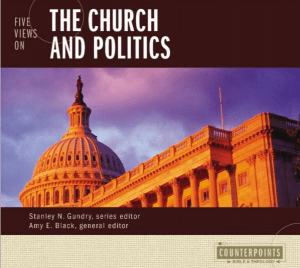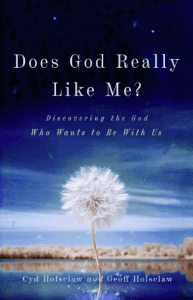 Unless you are European — German, Danish, Scandinavian — the Lutheran theory of church and politics may well be the least known in detail when it comes to how the church relates to the political dimension of life. The most discussed theories today — at least in my circles — is the Kuyperian and its various forms, the Anabaptist, and at times the Roman Catholic view.
Unless you are European — German, Danish, Scandinavian — the Lutheran theory of church and politics may well be the least known in detail when it comes to how the church relates to the political dimension of life. The most discussed theories today — at least in my circles — is the Kuyperian and its various forms, the Anabaptist, and at times the Roman Catholic view.
In Five Views of the Church and Politics, Robert Benne takes on the Lutheran view. We are looking at Amy Black (ed.), The Church and Politics: Five Views. She sketches these views:
1. The Anabaptist View (Separationist) [Thomas W. Heilke]
2. The Lutheran View (Paradoxical) [Robert Benne]
3. The Black Church View (Prophetic) [Bruce Fields]
4. The Reformed View (Transformationist) [JKA Smith]
5. The Catholic View (Synthetic) [J. Brian Bennestad]
Benne tells an accurate story, a story that (for me as one who has an anabaptist theory of church-state relations) is a form of Constantinianism for a post Holy Roman Empire era, but nonetheless a mixing of powers.
Luther and his followers had no intention of leaving the Roman Catholic Church; they wanted to reform it. After a number of tragic mishaps, however, Luther was excommunicated in 1521. By necessity, Luther had to rely on the princes and electors among his followers for protection in the next years. That fatefully aligned the Lutheran Reformation with the friendly political authorities of the day. Later the Lutheran churches became state churches—the state protected the churches, provided theological education, helped in the governance of the churches, and collected taxes for their support. This reliance on the state’s power and largesse tended to make the churches rather docile before secular authority. 60
That last few words of the previous leads Benne — he’s a big fan of Reinhold Niebuhr — to this stark and realistic admission about Lutheran politics today:
In spite of the efforts of American Lutheran scholars such as George Forell and William Lazareth to show that Lutheranism need not be quietistic and dualistic, the Troelstchian/Niebuhrian analysis seemed to stand: Lutheran political ethics is oxymoronic. Moreover, Lutheranism’s historical record seemed to bear witness to its bad rap. Luther and his cohorts carried out a Reformation of the church without touching the medieval trappings of an authoritarian and static society. When it was disrupted by the Peasant’s Revolt, Luther called for total annihilation of the peasants. 62
He clarifies:
After the volcanic first years of the Reformation, Lutheran theologians had to cooperate with Lutheran secular authori ties, especially jurists, to rebuild a new society out of the chaos of the old. Lutheran theologians, employing the two-kingdoms doctrine, worked hand-in-hand with secular agents to reform law, politics, and society. (Fatefully, I might add, the Lutherans gave over to the princes the care and control of the churches, which led in time to passive state churches.) 64
At times Benne can sound a bit Anabaptistic, and at other times a bit Kuyperian (JKA Smith writes an exceptional essay in this book, and we will look at it down the road a bit), but he thinks the Lutheran vision provides a “framework for public engagement” (66). But entanglement, too, can become an issue for Lutherans. Benne thinks Lutheranism leans toward “Christian realism.” Here are the principal themes of a Lutheran theory of church and politics:
The four central themes of the Lutheran vision are (1) a sharp distinction between salvation offered by God in Christ and all human efforts; (2) a focused and austere doctrine of the church that follows from the first theme; (3) the twofold rule of God through Law and Gospel; and (4) a paradoxical view of human nature and history. 67
But the central dynamic of Lutheranism is the law-gospel tension and so Benne is totally right in summarizing it all in these terms:
The Lutheran vision holds that God rules the world in two distinct ways—through the Law and the Gospel. The Law is his instrument to sustain and order the world. God did not abandon the world after the fall. He continues to sustain it through the Law, which refers to all his energies and actions that restrain, guide, and shape the world. Since the Law must deal with human sin, it must have a hard edge to it. Indeed, God often wields the Law of judgment against nations and empires, bringing them to naught. But the Law also builds up human life, working through many agencies to create a more humane and just world.
The Law is summarized in the Ten Commandments and carried by the moral teachings of the church, but it is also discerned by human reason and experience amidst the dynamics of life. The Bible contains many signposts for recognizing the operation of God’s Law in the world, but it has no blueprint for the complexities of modern economic, political, or social life. Humans have to work out what God demands anew in every generation. Secular people, since they also have the gift of reason and the benefit of experience, can contribute to this ongoing discernment of the Law, though they may not call it God’s Law. Christians are obligated, not only to cooperate with secular people in discerning and doing good works of the Law, but also to imagine and initiate programs that extend human justice. 70
Here we get to the ecclesial focus of the Lutheran view, one that touches on Anabaptism’s ecclesial focus but one that Benne sees as far more transformationist or influentialist in orientation:
Practically considered, the Lutheran vision also moves toward indirect ways of connecting the church to the public world. The second theme particularly calls the church to the task of nourishing and sustaining the callings of lay Christians as they move from the church into the world. If the church is really the church, it will effect an internal “revolution of the heart” among its laity that will indeed affect the world. The church will form the hearts and minds of laity, who will then enter all the complex interstices of the public world that are unreachable by the direct efforts of the church. 75











